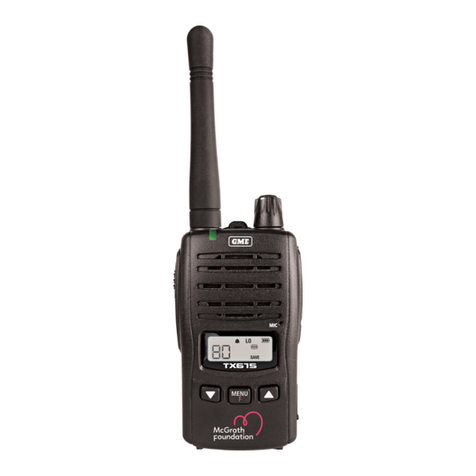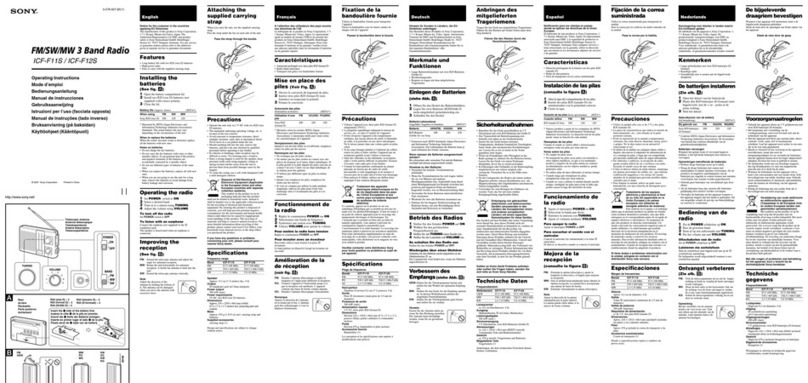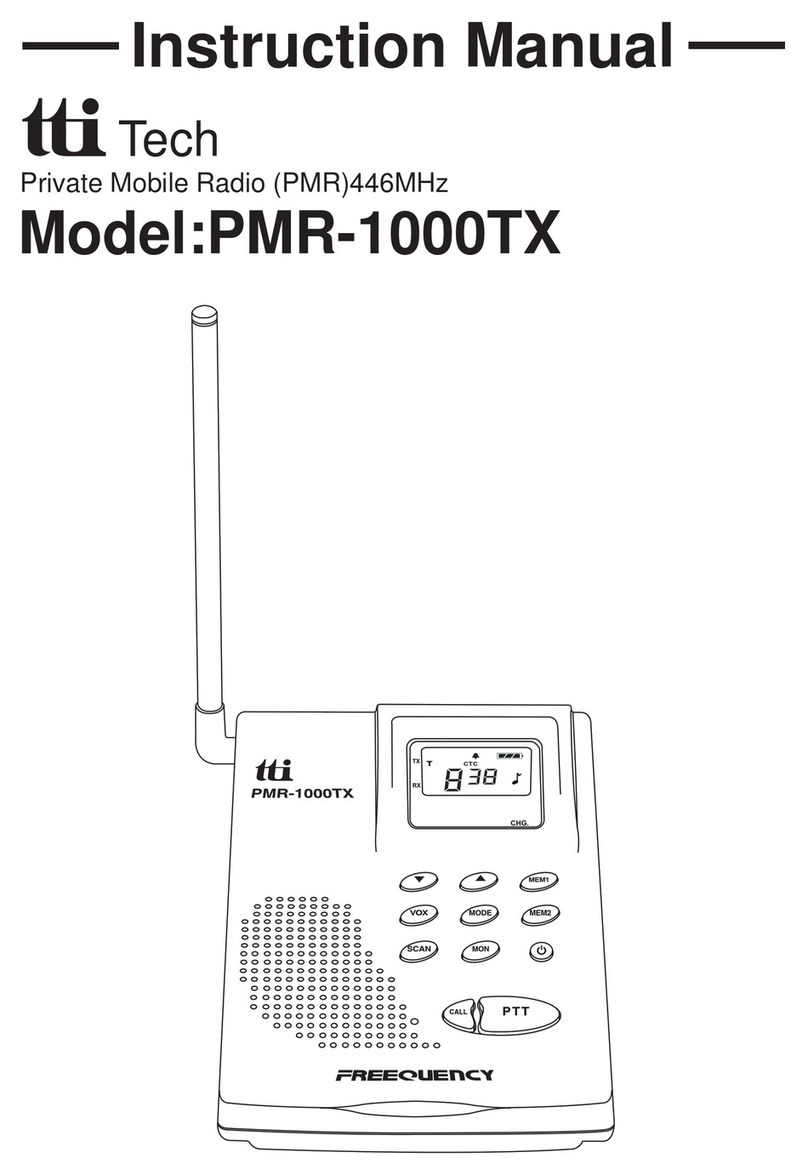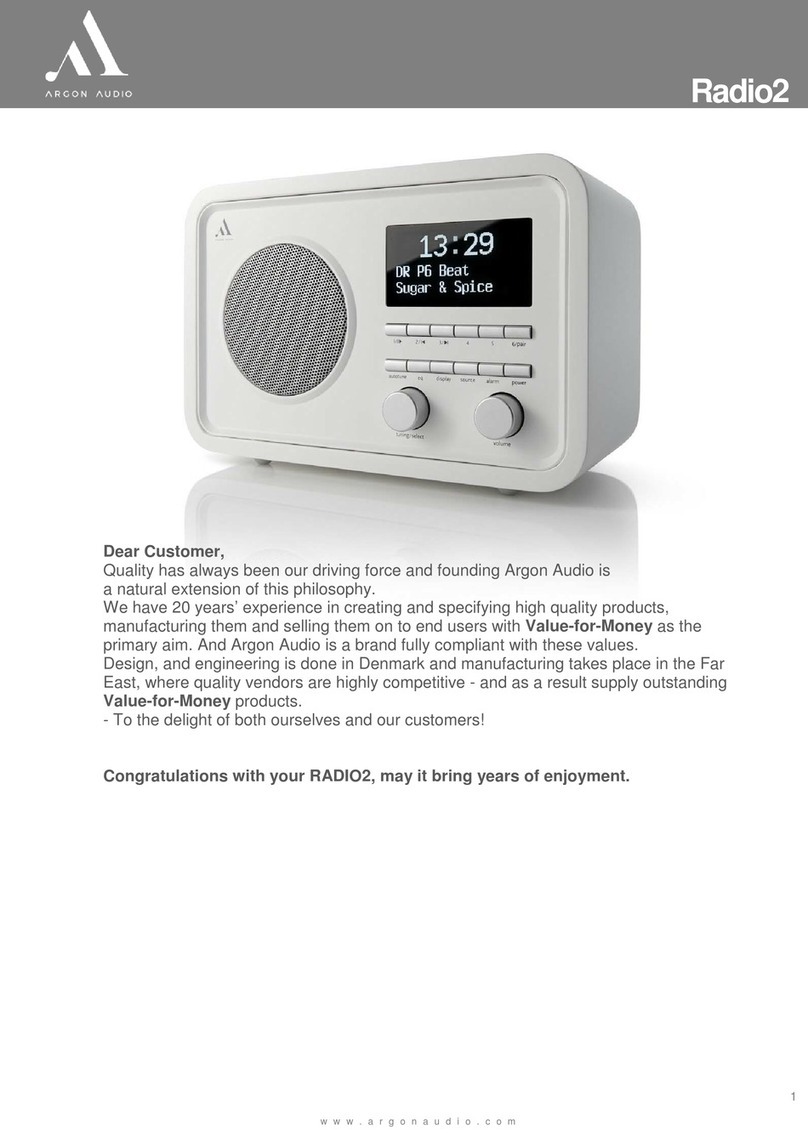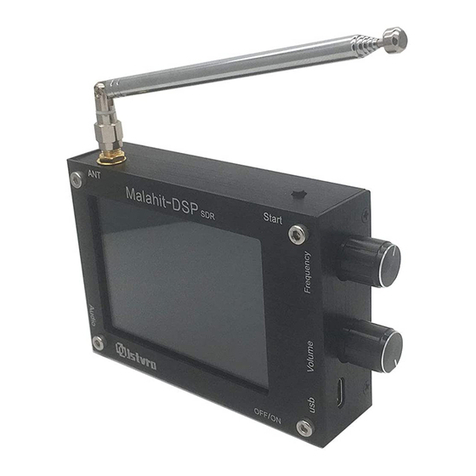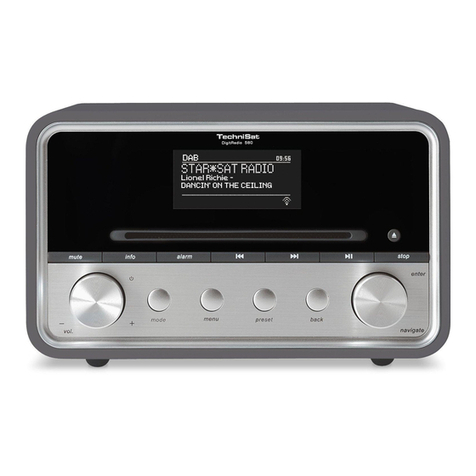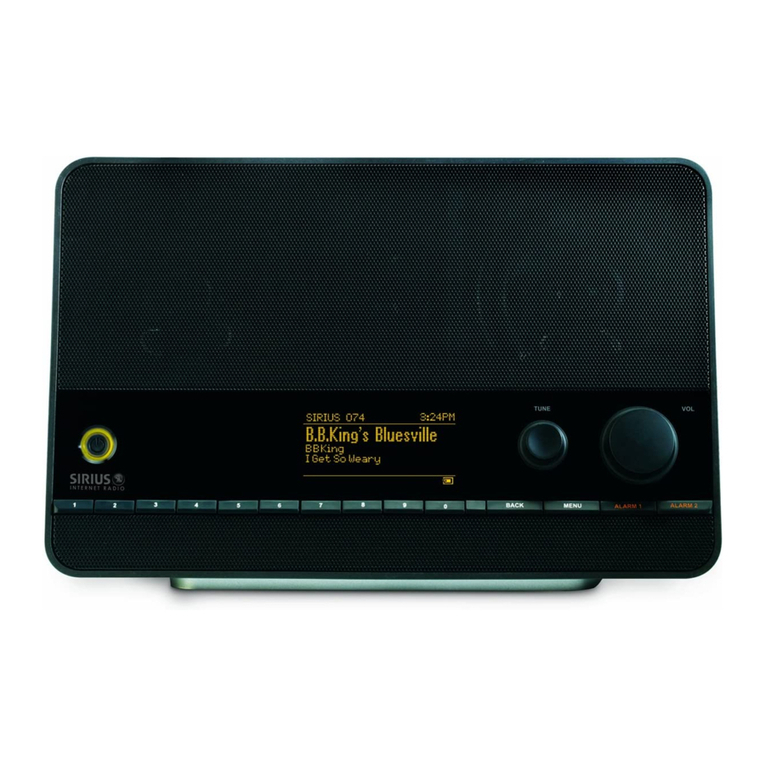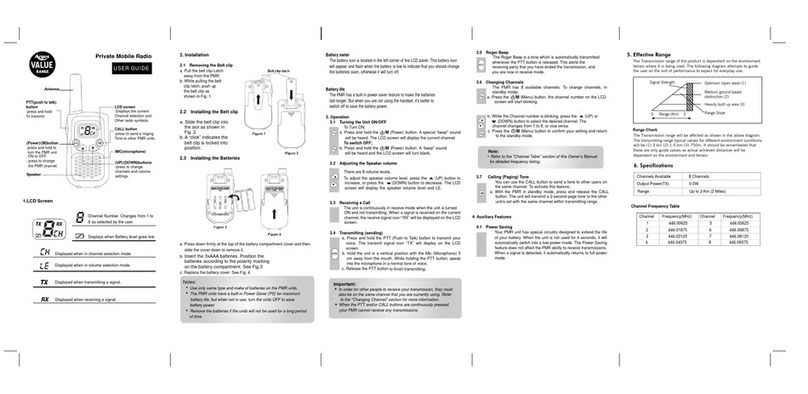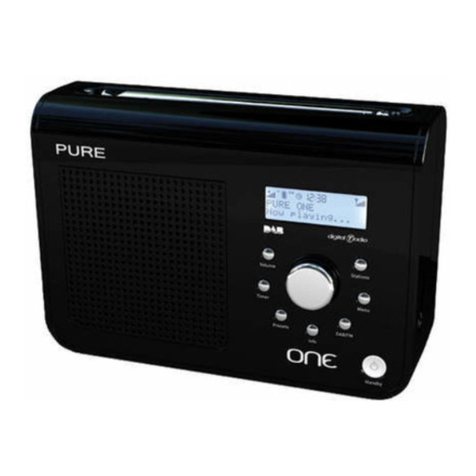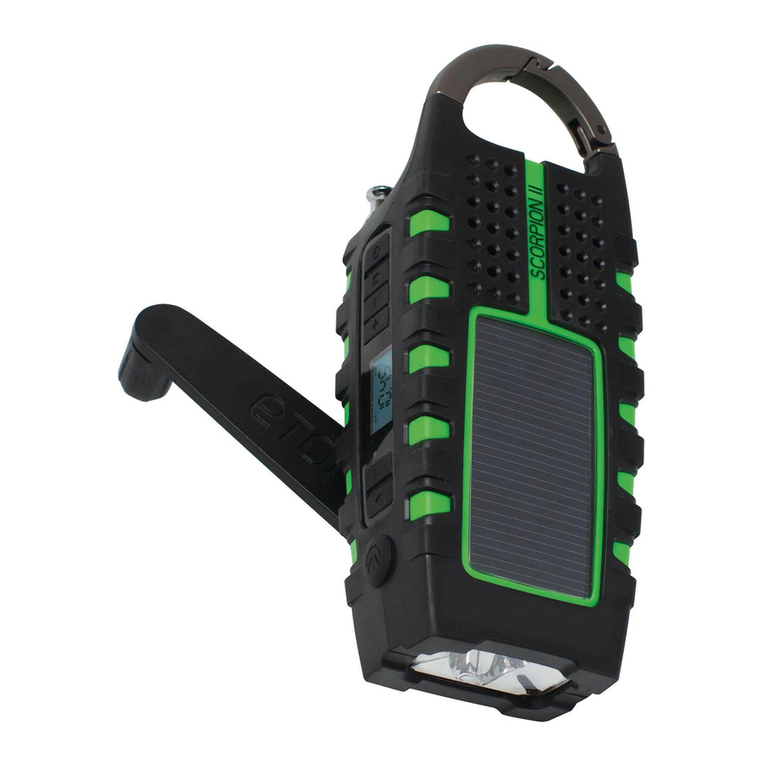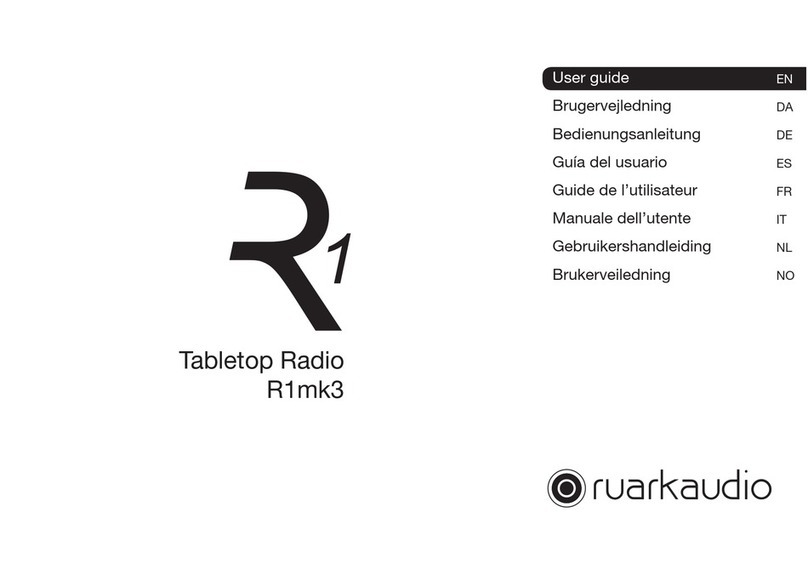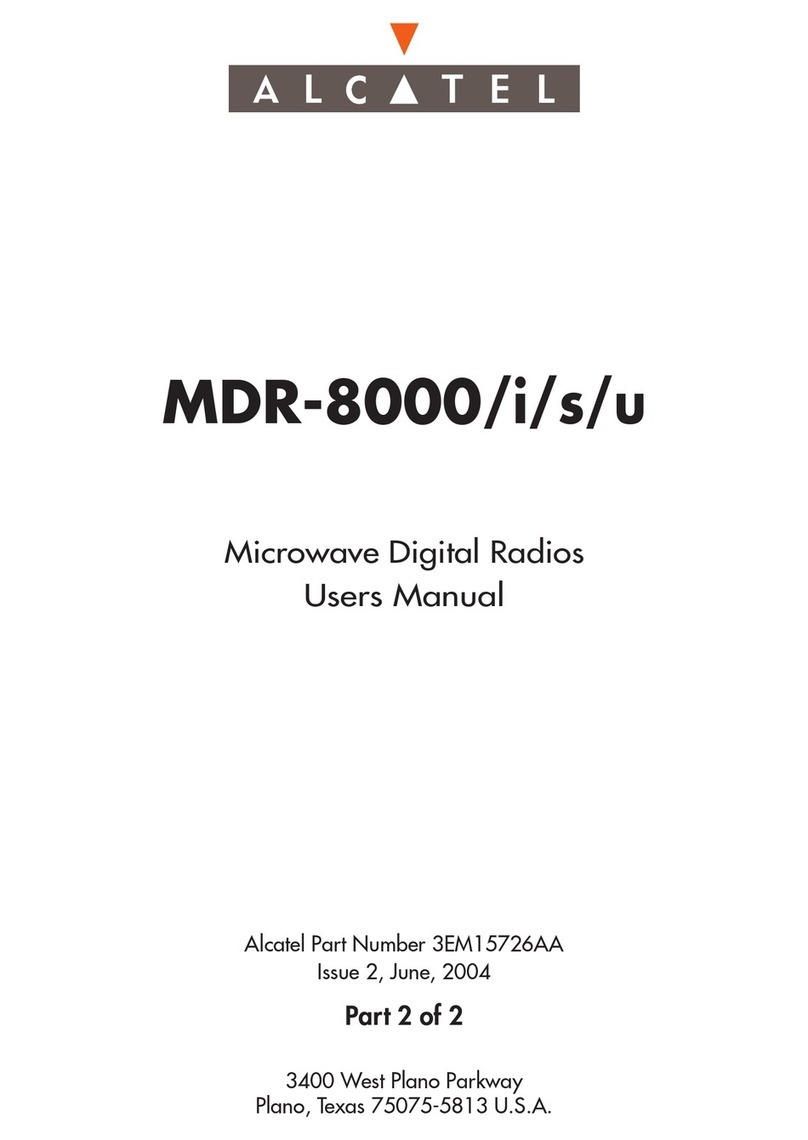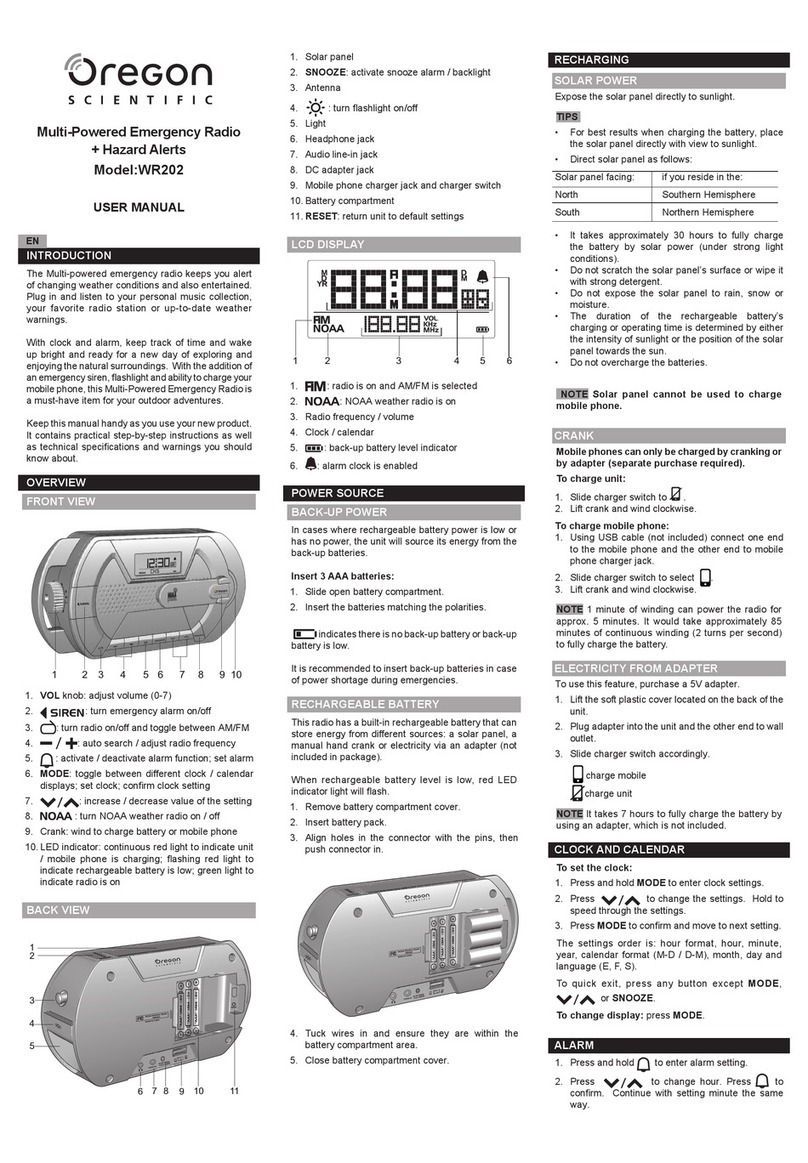Sindoor Kit Si Room Instruction sheet

Las principales características de este kit son:
Alimentación a 230V
Amplificador estéreo de 1.5 + 1.5W
Sintonizador de FM integrado con RDS
Altavoces de 2.5” con aro y rejilla de aluminio
Fácil montaje de altavoces (como un foco halógeno)
Mando empotrado en la pared
Pantalla gráfica retroiluminada
Menú dinámico
Reloj con 2 alarmas programables
6 memorias de radio
Temporizador programable
Desconexión temporizada
The main characteristics of this kit are:
Power supply 230V
Stereo amplifier 1.5 + 1.5W
FM tuner integrated with RDS
2.5” Speakers with aluminum ring and grill
Easy speakers installation (as a halogen light bulb)
Wall-mounted control
Illuminated graphic display
Dynamic menu
2 programmables alarm clock
6 radio memories
Programmable timer
Sleep
Garantía
Manual de usuario e instalación
User and Install manual
Instalación / Installation
IMPORTANTE:
CAUTION.
Para evitar riesgos de incendio o descargas eléctricas,
instale el equipo según las instrucciones del fabricante, no lo exponga a la
humedad, no desmonte ninguna de sus partes.
To eliminate risk of fire or electric shock: Install the equipment
according to manufacture instructions, don´t expose to dripping and
don´t dissemble pieces.
Características técnicas / Technical specifications
Alimentación / Power supply 230 V AC
Instalación / Installation Estéreo / mono
Máxima potencia salida / Maximum power output 1,5 W + 1,5 W
Impedancia mínima / Minimum impedance 16 / canal - channelW
Fuentes musicales / Musical sources 0,4 V RMS
Radio / Radio FM - RDS
Margen regulación / Margin regulation 80 dB (16 p.)
Idioma / Languaje Español, Portugues, English
Dimensiones módulo / Module dimensions 44 x 44 x 40 mm
room
L2 R2 R+ R-
F N L+ L-
+ -
230v
Entrada auxiliar,
AUX input
Antena, Antenna
MONO
Taladro para altavoz / Speaker drill Ø 76 - 80 mm
L2 R2 R+ R-
F N L+ L-
+ -+ -
230v
ESTÉREO, STEREO
Entrada auxiliar,
AUX input
Antena, Antenna
Sound Indoor garantiza la Calidad de sus productos ante cualquier defecto de fabricación en
los términos legalmente establecidos y por un periodo de dos años a partir de la fecha de
entrega.
Los productos defectuosos o averiados deberán ser enviados a Sound Indoor, una vez
reparados se enviarán de nuevo al cliente. Los portes serán siempre a cargo del cliente.
Esta garantía no incluye las deficiencias ocasionadas por negligencias, golpes, uso o
manipulaciones indebidas, tensión o instalación incorrectas, ni materiales sometidos a
desgaste por su uso normal.
La garantía perderá su valor:
- Si se modifican, alteran o sustituyen algunos de los datos de la misma o del justificante de
compra.
- Si se manipula o repara tanto el número identificativo como el propio producto garantizado
sin conocimiento del Servicio Técnico.
Para hacer uso de la garantía, es imprescindible reseñar el número identificativo del
producto junto con el justificante de compra.
Sound Indoor guarantees the Quality of its products against any manufacturing defect under
the term previously established and for a period of two years from the shipping date.
The defective or broken down products should be sent back to Sound Indoor S. Once the
products were repaired they will be sent back to the customer. The postages will be always paid
by the customer.
This guarantee does not include the defects produced by negligence, knocks or improper
manipulations, improper installations, improper electrical power or standard wearing out
cause by normal use.
The guarantee will lose its value:
- If some pieces of information of the guarantee or the proof of payment are modified,
changed, or substituted.
- If the identity number or the product itself are modified or manipulated without previous
knowledge of the Technical Service.
To make use of the guarantee it is absolutely necessary to provide the identity number of the
product and the proof of payment.
Guarantee
Sound Indoor S.C.
Polígono El Plano nave 93, María de Huerva
50430 Zaragoza (ESPAÑA)
Tel.: +34 976 126 571 ventas@sindoor.es
www.sindoor.es

Instructions of operation
OFF CONTROL UNIT - STANBY SCREEN
ON CONTROL UNIT - MUSIC SCREEN
DYNAMIC MENU - MENU SCREEN
The associated loudspeakers to the control unit remain in silence and the display shows us
the information of < FIG.1 >.
1.- Press any key to activate the lighting of the display.
: if the display already is on (by configuration) this step is not necessary.
2.- Press the key 1 ( ) to power on the control unit. ( to see ON CONTROL UNIT )
: upon lighting the control unit we go to listen the same channel of music that the
control unit had selected just before the last power off / disconnection.
3.- Maintain pressed the key 1 ( ) to access to the MENU SCREEN and to see the different
options of menu ( to see DYNAMIC MENU )
: the beating should be maintained until is visualized in the display the tree of menu.
4.- Maintain pressed the key 2 ( ) to launch / to activate a notice SOS.
: it has 5 sg. of security to cancel the notice SOS, press any key before to pass that
interval time.
Activated the notice SOS, it can be enabled pressing any key.
5.- Press repeatedly the key 3 ( ) to enable or to disable in sequential form the wake up
alarm that control unit have activated by configuration.
: if the alarm clocks are not activated by configuration, the icon ( ) will not appear
in screen and this option does not apply.
The program / channel of music selected is listened through the loudspeakers of installation
and the display of control unit shows us the information < FIG.2 >
1.- Press the key 1 ( ) to power off the control unit.
2.- Maintain pressed the key 1 ( ) to access to the MENU SCREEN and to see the different
options of menu (to see DYNAMIC MENU)
3.- To rise or to descend the volume of the control unit, press the key 2 ( ) or the key 3 ( )
respectively, until obtain the level desired.
4.- Press the key 4 ( ) to select among the different channels music.
: each key pulse selects a channel; the channels of available music depend on the
model of control unit and of how the installation is planned.
This screen is temporary and it permits to manage all the actions and configurations of
control unit. Once it visualized the menu tree < FIG.3 >, press the keys 2 ( ) or 3 ( ) to
navigate from one option of menu to another and validate the selection of one of them
pressing the key 4 ( ). Press the key 1 ( ) to return back at any moment.
1.- MUSIC OPC.*: selected this function, the mode to make changes depends of music
channels selected just. If Radio channel it selected them press the keys 2 ( ) or 3 ( ) to
seek a new radio station, maintain pressed the key 4 ( ) until appears SAVE in the screen,
select the memory for keep with the keys ( ) or 3 ( ) and validate the selection
pressing the key 4 ( ). With other channels, similar management.
2.- SLEEP: selected this function, press the keys 2 ( ) or 3 ( ) to plan the time of
disconnection and validate the selection pressing the key 4 ( ).
3.- TIMER: idem option SLEEP.
4.- WAKE UP 1: selected this function, modify the fields hour, minutes and type of alarm
pressing the keys 2 ( ) or 3 ( ) and validate pressing the key 4 ( ).
5.- WAKE UP 2: Idem. option WAKE UP 1
6.- AUTOSCAN*: upon the selecting this function, the FM tuner of control unit throws one
automatic scan and save in its memory the 6 radio stations with better signal.
7.- SETUP**: selected this function, we go to visualize a second menu tree < FIG.4 >, from it we
can configure, very similar steps apply in the management of the options in main menu,
the following parameters: CLOCK - 12/24 HOUR DATE - LIGHT GROUND LANGUAJE ZONE
DIRECT Z. M.O. MENU C. OFFSET TEST VERSION - RESET
* Only visible option if we agree to the MENU SCREEN since the MUSIC SCREEN.
** Only visible option if we agree to the MENU SCREEN since the STANBY SCREEN.
The remainder of options they are always visible upon agreeing to the MENU SCREEN.
: all the control unit keys have attached some context icons to give intuitive and clear
information to user. This screen information is useful when we want to navigate over control
menus and to manage any control options.
Options
Options
Options of the menu
M
Note
Note
Note
Notes
Note
Note
Note
H
M
A
A
O
M
U D
6
8 2
V 4
8 2
+ -
V
+ -
V
+ - V
SOS
Sound Indoor SC se reserva el derecho de introducir modificaciones sin previo aviso. Sound Indoor SC no se responsabiliza de los errores u omisiones de este manual.
Sound Indoor SC reserves the right to make changes without prior notice. Sound Indoor SC is not responsibile for any errors or omissions that may apper in this manual.
mi0012-1
Instrucciones de funcionamiento
MANDO APAGADO - PANTALLA REPOSO
MANDO ENCENDIDO - PANTALLA MÚSICA
MENÚ DINÁMICO - PANTALLA MENÚ
Los altavoces asociados al mando permanecen en silencio y el display nos muestra la información
que detalla la < FIG.1 >.
1.- Pulse cualquier tecla para activar la iluminación del display.
: si el display ya esta iluminado (por configuración) este paso no es necesario.
2.- Pulse la tecla 1 ( ) para encender el mando. (ver MANDO ENCENDIDO)
: al encender el mando pasamos a escuchar el canal de música que el mando tenía
seleccionado justo antes del último apagado / desconexión.
3.- Mantenga pulsada la tecla 1 ( ) para acceder a la PANTALLA MENU y ver las distintas opciones
de menú. (ver MENÚ DINÁMICO)
: la pulsación debe mantenerse hasta que se visualiza en el display el árbol del menú.
4.- Mantenga pulsada la tecla 2 ( ) para lanzar / activar un aviso SOS.
: dispone de 5 sg. de seguridad para cancelar el aviso SOS, basta con pulsar cualquier tecla
antes de que trascurra ese intervalo de tiempo.
Activado el aviso SOS, este puede desactivarse pulsando cualquier tecla.
5.- Pulse repetidamente la tecla 3 ( ) para activar o desactivar de forma secuencial los
despertadores que el mando tenga activados por configuración.
: si los despertadores no están activados por configuración, el icono ( ) no aparecerá en
pantalla y esta opción no aplica.
Se escucha el programa / canal de música seleccionado a través de los altavoces de la instalación y
el display del mando nos muestra la información que detalla la < FIG.2 >.
1.- Pulse la tecla 1 ( ) para apagar el mando.
2.- Mantenga pulsada la tecla 1 ( ) para acceder a la PANTALLA MENU y ver las distintas opciones
de menú. (ver MENÚ DINÁMICO)
3.- Para subir o bajar el volumen del mando, pulse la tecla 2 ( ) o la tecla 3 ( ) respectivamente,
hasta conseguir el nivel deseado.
4.- Pulse la tecla 4 ( ) para seleccionar entre los distintos canales de música disponibles.
: cada pulsación selecciona un canal; los canales de música disponibles dependen del
modelo del mando y de cómo este planteada su instalación.
Esta pantalla es temporal y permite gestionar todas las acciones y configuraciones del mando.
Una vez visualizado el árbol del menú < FIG.3 >, pulse las teclas 2 ( ) ó 3 ( ) para saltar / pasar
de una opción de menú a otra y valide la selección de una de ellas pulsando la tecla 4 ( ). Pulse la
tecla 1 ( ) para volver atrás en cualquier momento.
1.- OPC. MÚSICA*: seleccionada esta función, la forma de realizar cambios depende del canal de
música seleccionado en ese momento. Si esta seleccionado el canal Radio, pulse las teclas 2
( ) ó 3 ( ) para buscar una nueva emisora, mantenga pulsada la tecla 4 ( ) hasta que
aparece GUARDA en la pantalla, seleccione la memoria para guardar con las teclas 2 ( ) ó 3
( ) y valide la selección pulsando la tecla 4 ( ). Con otros canales, gestión similar.
2.- DESCONEX.: seleccionada esta función, pulse las teclas 2 ( ) ó 3 ( ) para programar el
tiempo de desconexión y valide la selección pulsando la tecla 4 ( ).
3.- TEMPORIZ.: Idem. opción DESCONEX.
4.- ALARMA 1: seleccionada esta función, modifique los campos hora, minutos y tipo de alarma
pulsando las teclas 2 ( ) ó 3 ( ) y valide cada selección pulsando la tecla 4 ( ).
5.- ALARMA 2: Idem. opción ALARMA 1
6.- AUTOSCAN*: al seleccionar esta función, el sintonizador FM del mando lanza un escaneo
automático y guarda en sus memorias las 6 emisoras de radio con mejor señal.
7.- CONFIG.**: seleccionada esta función, pasamos a visualizar un segundo árbol de menú < FIG.4
> desde el que se pueden configurar, siguiendo pasos muy similares a los aplicados en el manejo
de las opciones del menú principal, los siguientes parámetros: RELOJ - HORA 12/24 FECHA -
NIVEL DE LUZ FONDO IDIOMA MENU O.M. R.OFFSET TEST -VERSION - RESET
* Opción sólo visible si accedemos a la PANTALLA MENÚ desde la PANTALLA MÚSICA.
** Opción sólo visible si accedemos a la PANTALLA MENÚ desde la PANTALLA REPOSO.
El resto de opciones son siempre visibles al acceder a la PANTALLA MENÚ.
: cada una de las teclas del mando lleva asociados varios iconos de pantalla que ofrecen al
usuario información intuitiva y clara en cada momento; esa información de pantalla resulta muy
útil a la hora de moverse por los menús para activar las distintas opciones del mando.
Opciones
SOS
Opciones
Opciones del menú
M
Nota
Nota
Nota
Notas
Nota
Nota
Nota
H
M
A
O
M
U D
6
A
8 2
V
4
8 2
+
- V
+ -
V
+ - V
Iconos asociados / Associated icons
< FiG.4 >
Icono cancelar / Cancel icon
Siguiente / Next
Icono validar / Validate icon
< FiG.3 >
Icono apaga / Music off icon
Icono menú / Menu icon
Nivel volumen / Level volume
+ Volumen / + Volume
Memoria / Memory
Canal / Channel
Info. RDS / RDS info.
Frecuencia / Frecuency
- Volumen / - Volume
Hora / Hour
Icono siguiente / Next icon
< FiG.2 >
Icono música / Music icon
Icono menú / Menu icon
Aviso SOS / SOS call
Hora / Hour
Temporizador / Timer
(sólo activado activated only)/
Alarmas / Alarms
( )sólo activado activated only/
Fecha / Date
< FiG.1 >
1 2
43
V
6
validar / validate
siguiente/ next
D
2
-
- volumen / - volume
siguiente opción / next option
baja valor / down edit data
U
8
+
+ volumen / + volume
anterior opción / prior option
sube valor / up edit data
H
O
4
música / music on
apaga / music off
cancelar / cancel
Mmenú / menu
TECLAS / KEYS

